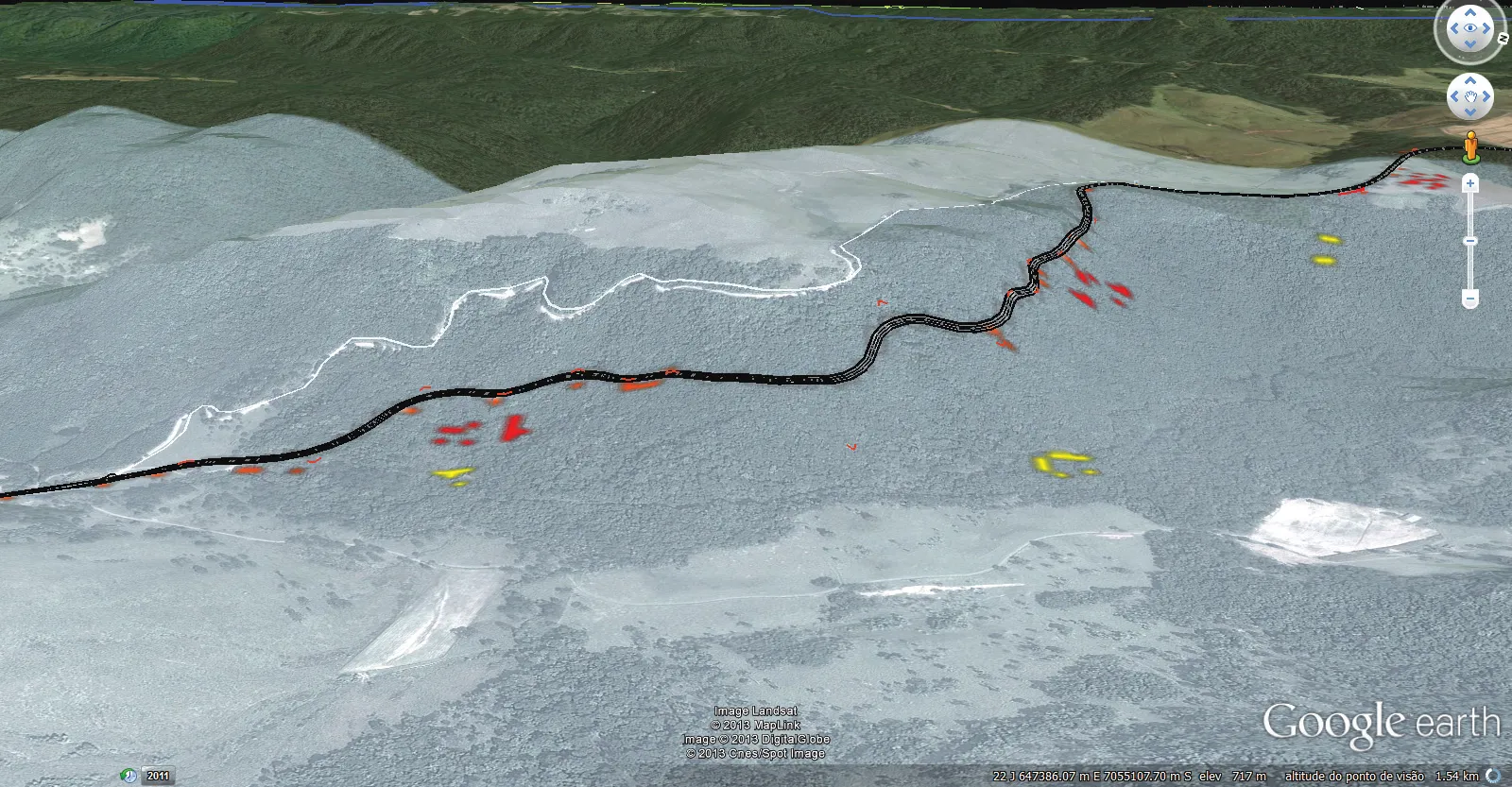An envisaged shortage in the supply of angular rock or crushed stone in Tanzania and a determination to conserve the environment by Kenyan authorities dictated the engineering design of a multi-national road linking the two largest economies in Eastern Africa. Shem Oirere reports The cost of buying crushed stone or hiring a site for mining the material and the expenses of moving it from the crushing site to the project area, saw designers opt for an intermediate alignment and discarding of the inner and out
June 25, 2013
Read time: 7 mins

An envisaged shortage in the supply of angular rock or crushed stone in Tanzania and a determination to conserve the environment by Kenyan authorities dictated the engineering design of a multi-national road linking the two largest economies in Eastern Africa. Shem Oirere reports
The cost of buying crushed stone or hiring a site for mining the material and the expenses of moving it from the crushing site to the project area, saw designers opt for an intermediate alignment and discarding of the inner and outer alignment of the stretch from Sakina to Tengeru in Tanzania, which is part of the 157.5km Arusha–Holili/Taveta–Voi Road Project being financed by the“The intermediate alignment was the most attractive in terms of value for investment, economic viability and expropriation costs being located behind most of the residential areas of Arusha City,” said a technical brief by the AfDB.
The design rejected road realignment with a crushed stone rock base because of the “unavailability of good quality road materials".
For Tanzania, the contractor will, however, recycle and blend the existing pavement material for the Sakina–Tengeru dual carriageway in order to reduce pressure on quality road building materials, which have become scarce due to the large road construction projects currently ongoing in the region.
Consideration for the best design alternative for the Kenyan side of the project was influenced by an environmental impact assessment study that recommended doing away with the “existing gravel condition based on the environmental conditions".
As it stands now, the gravelled Taveta–Voi–Mwatate Road is considered costly because of the hiring of gravel mining sites for more material, the dust generated from the road and the high cost of transporting the gravel over long distances.
The 101km road project entails upgrading 89km to bitumen standards and the construction of a 12km Taveta Bypass of 7m-wide carriageway with 2m sealed shoulders.
According to the
According to the approximate quantities of works by KeNHA, more than 776,000m³ of cement, concrete and bitumen will be used in the making and installation of various road works along the 101km road and bypass.
Some 20,690tonnes of cement, lime and steel will also be used for reinforcements, stabilisation and bridge construction.
The project
In Tanzania, the project involves dualling of the 14.1km stretch between Sakina and Tengeru and the construction of the Arusha Bypass of 7m carriageway and 2m sealed shoulders.This $262.3million regional road starts in Arusha city in Tanzania going through the existing road through Usa River, Boma la Ng'ombe, Moshi and Himo and ends at Holili, comprising of 42km of bypass and 115km on the existing Arusha–Moshi–Holili Road. The project enters Kenya at Taveta and runs through existing road from Taveta to Mwatate.
It links the Northern Corridor at Voi in Kenya to the Central Corridor across the Kenya/Tanzania common border at Holili/Taveta crossing point, making its way through Arusha and Babati to Dodoma and Singida. The Northern Corridor connects Kenyan markets with Uganda, Rwanda, Burundi, eastern Democratic Republic of the Congo and northern Tanzania while the Central Corridor connects Tanzanian markets with Rwanda, Burundi and the Democratic Republic of the Congo.
Both Kenya and Tanzania, through KeNHA and the Tanzania National Roads Agency (Tanroads), are expected to finalise the bidding and contract-awarding process by the fourth quarter of this year. Civil works for the regional roads, including the bypasses on both sides, are expected to break ground in the third quarter of this year and the project is due for completion in 2016.
Both KeNHA and Tanroads are also expected to complete the compensation and resettlement programme of affected populations along the project route by the end of next year. Expectations at government and private sector level are high on this project, which is the third one to be financed by the AfDB in Eastern Africa.
The AfDB is also involved in the construction of two other roads in Eastern Africa. The projects include the Kenya/Ethiopia link that involves the construction and tarring of 438km of road sections, being the 245km Merille River–Marsabit–Turbi road section in Kenya and the 193km Ageremariam–Yabelo–Mega road section in Ethiopia.
The bank is also funding the construction of yet another Kenya/Tanzania link, the Arusha–Namanga–Athi River Road, which involves construction of 130km of the road to 7m wide carriageway with a surfacing of asphalt concrete and singe seal surface dressing and 2m-wide sealed shoulders on each side.
According to Gabriel Negatu, the AfDB East Africa Resource Centre regional director, the new Arusha–Holili/Taveta–Voi Road will “improve regional transport infrastructure to support economic and social development programmes in the region".
He said, “It will promote tourism and foster regional integration and at the same time reduce the cost of doing business by supporting cross-border and international trade.”
By the first quarter of 2017, when the road will have been completed and will be operational, trade volumes between Kenya and Tanzania is expected to grow from the current 0.4 million tonnes/year to an estimated 3 million tonnes by 2020. Tourists visiting the two countries, famous for their Maasai Mara and Serengeti game reserves respectively, will increase from the current 40,000 to 100,000 according to predictions by the AfDB and the East African Community (EAC) secretariat. The EAC is a regional economic bloc of Tanzania, Kenya, Uganda, Rwanda and Burundi.
The cost of transport between Tanzania and Kenya is also set to drop from the current $0.52/vehicle for every kilometre to $0.34 when the road is officially commissioned in the fourth quarter of 2016.
Travel times
Travelling between Mombasa, the starting point of the Northern Corridor, to Arusha in Tanzania has been agonising for many travellers because of the many hours spent on the road. It is estimated that the journey takes an average of six hours. With the completion of the road the journey will take about four hours.The EAC has previously expressed concern over the period that it takes to clear goods at the common borders of its member states. For example it could take up to 24 hours for cargo trucks to cross the border point of Taveta/Holili. The situation, however, is likely to change for the better when the One-Stop-Border-Posts (OSBPs) are constructed, equipped and in operation.
“The OSBPs' facilities are expected to have in place office furniture and operational equipment and a single window platform to facilitate integrated flow of trade and related information systems,” said the AfDB.
In addition, both countries envisage an increase in earnings for the population close to the regional road by up to 20%. The road directly impacts on about 584,000 people in Tanzania and about another 284,000 in Kenya.
However, both Kenya and Tanzania seem to face similar challenges on key road projects because of the expansive national parks that cut across huge swathes of land. At a time when Tanzania is yet to conclude the row sparked by a government-sponsored new highway cutting through the Serengeti National Park, Kenya has put forward several measures to mitigate the impact of the Arusha–Holili/Taveta–Voi Road on the expansive Tsavo West National Park.
The Tsavo West National Park, according to the environmental impact assessment report, is “an environmentally sensitive ecosystem".
The report noted, “Construction activities, especially noise, earthworks and presence of people could interfere with wildlife feeding and breeding patterns.”
The project, the report said, is likely to provide opportunities for poachers and destruction of the natural resources for wood fuel as well as disruption of animal dispersal patterns.
However, KeNHA and the Kenya Wildlife Services (KWS) have committed themselves to ensuring minimal impact on the park through various measures, such as the erection of speed-calming features, including speed humps and signage to reduce vehicle speeds and also enhancing surveillance at the park by the KWS including closing the park at night to mitigate poaching.
The African Development Bank, through the African Development Fund (ADF), has extended a loan of $113 million and $120 million to Kenya and Tanzania respectively for the construction of the regional road link. Both governments will provide counterpart funding of $15.5 million (Kenya) and $12.2 million (Tanzania) for the project. In addition, the African Trade Fund (AfTra) has given a $739,081 grant to the East African Community secretariat towards strengthening its role in ensuring completion of the road project.









